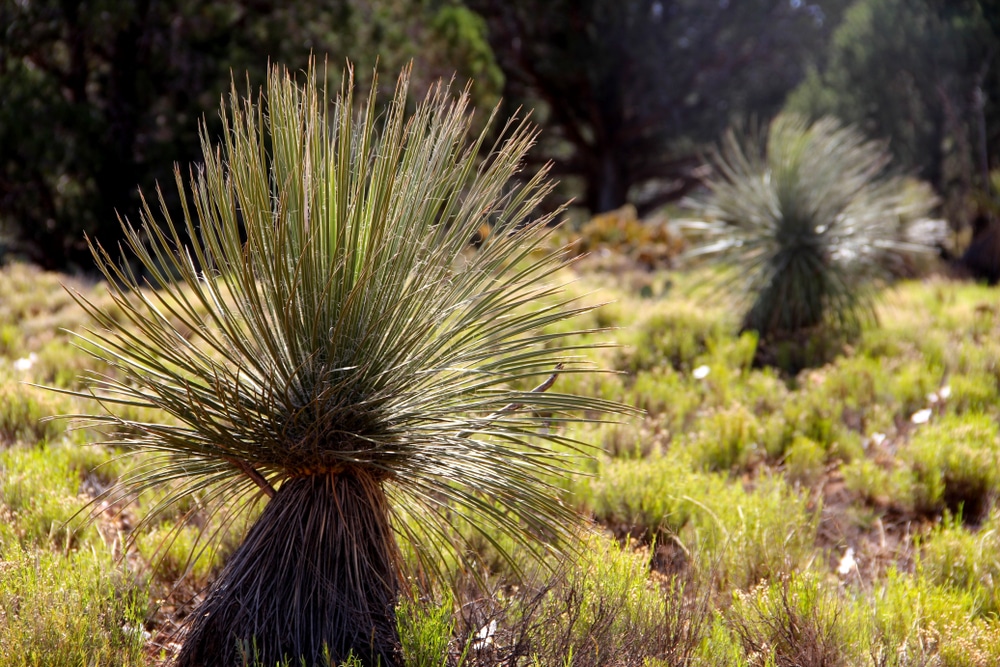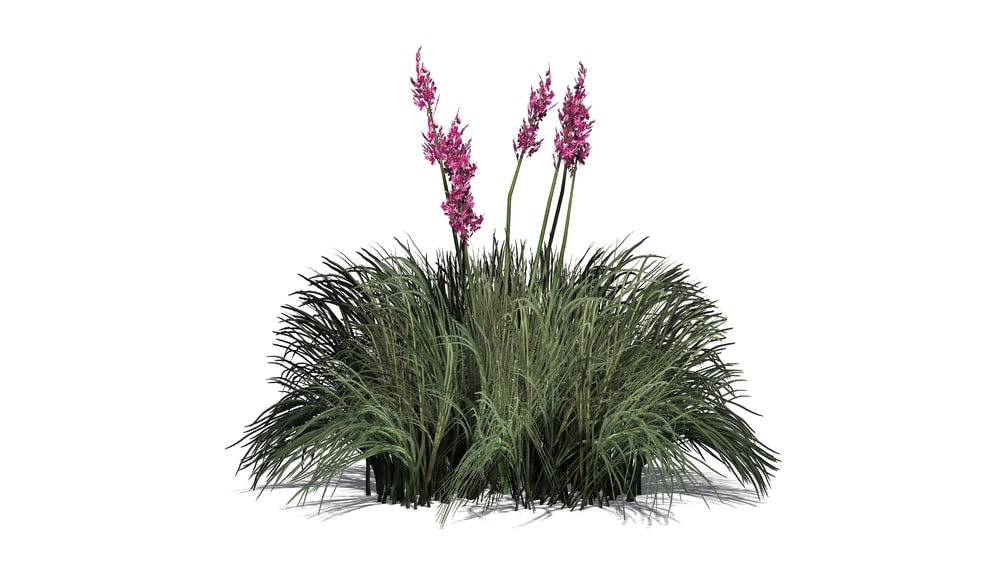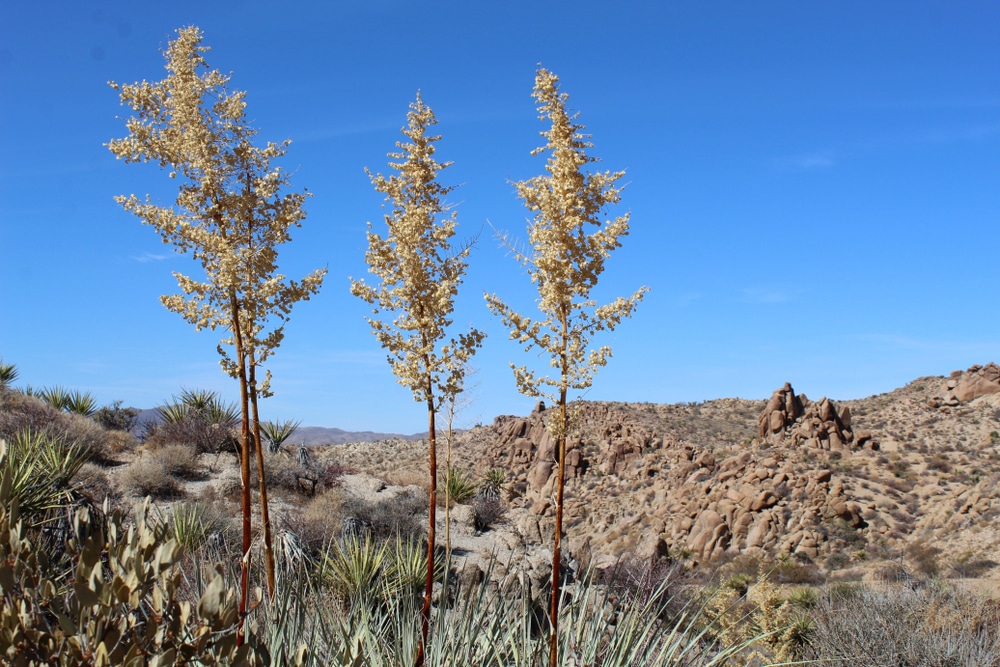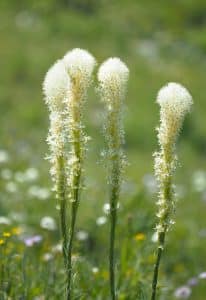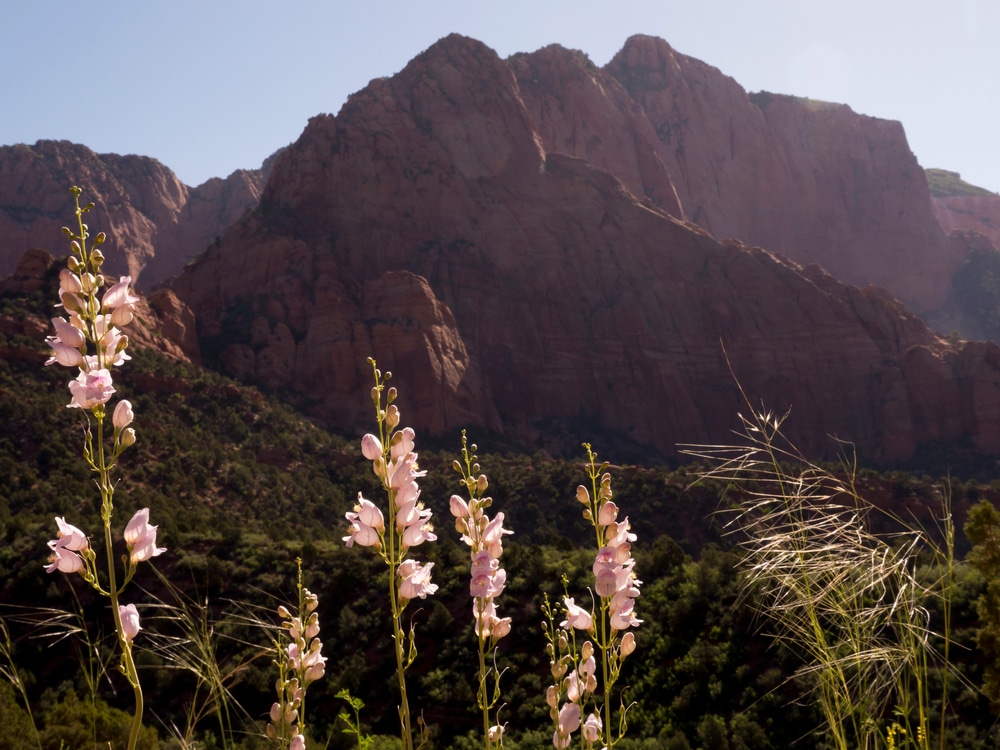Yucca is a perennial, evergreen shrub found primarily in the American Southwest and Mexico. The plant grows in clumps, with long sharp blades as leaves and sporting clusters of bell-shaped flowers. Several plants also carry a surprising similarity to the spiky yucca plant, with dagger-shaped leaves and groupings of fragrant flowers. Let’s look at plants similar to yucca.
Green Sotol
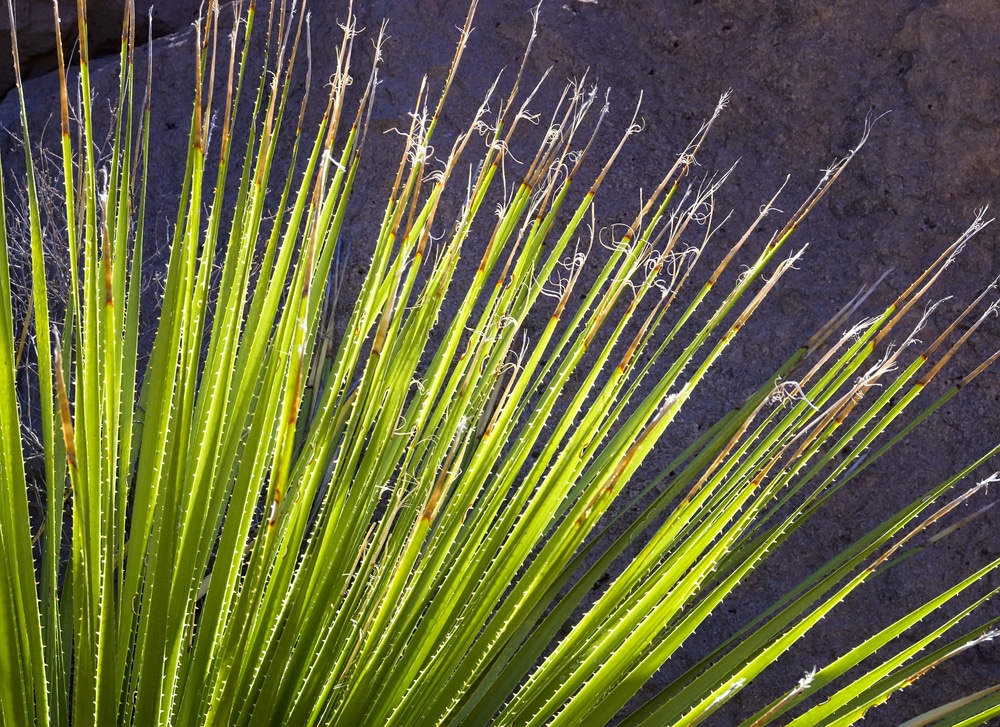
Green sotol (Dasylirion leiophyllum), also known as Texas sotol, is native to the American Southwest. The plant has a short trunk with a collection of blade-like leaves similar to the yucca.
Instead of clusters of flowers close to the leaves, Green sotol grows stalks that can be 9 to 15 in height! Used historically for building materials, today, these plants are primarily ornamental.
Common Sotol
Common sotol (Dasylirion wheeleri) grows in singular cluster-like shrubs, their base of sharp leaves kept tightly together.
Basketweavers use the sotol’s leaves in their projects, as well as in mats or thatching. The plant has a broad, spoon-like base that can be found in floral arrangements.
Similar to the Green sotol, they have tall flower stalks. The stalks end in clusters of thousands of small white-green flowers.
Red Yucca
Despite its name, red yucca (Hesperaloe parviflora) is not the same as the more traditional evergreen yucca that grows throughout the American Southwest.
They share similarities in that they both grow a bushy, spiky shrub of sword-like leaves. But the red yucca’s leaves are thinner, so the bush appears closer to ornamental grass. The red yucca also sends out “pups,” which are several smaller plants attached to the mother plant.
The “red” refers to the red flower that grows from the stalk. There are some varieties, however, where that flower is yellow instead.
Bigelow’s Nolina
Bigelow’s nolina (Nolina bigelovii) is smaller than the yucca plant and some others on this list. With about 50 to 150 razor-shaped leaves, this can grow in single clusters. Or it can grow on a stalk up to seven feet tall.
What makes that interesting is that the stalk is usually buried underground, and the main plant is growing atop other older clusters of the same plant.
Sacahuista
Sacahuista (Nolina microcarpa) is a member of the Lily family! This big bushy plant, native to the Texas Rangelands, is comprised of numerous blades of grasslike leaves. The sacahuista, which looks like an enormous ornamental plant, grows to approximately five feet across.
When there’s enough rain, the plant will produce several stalks of flowers that grow in concentrated clusters.
Parry’s Beargrass
Parry’s beargrass (Nolina parryi) is a robust, spikey, dark green plant that resembles the yucca’s color and shape. However, unlike others, the flowers atop the stem are very dramatic.
The flowers are pale yellow and grow along the entire stem in hundreds of blooms. The flowering stalk is oversized, nearly equalling the plant it grows from.
Like others, the leaves from this plant are used in baskets, mats, and other interesting weaving projects.
Texas sacahuista
Texas sacahuista (Nolina texana) is slightly different from its cousin sacahuista (Nolina microcarap). This variety is much smaller, and the flowers that grow during its flowering period are somewhat easier to spot due to this size.
It’s a host plant for two types of butterfly larvae and a source of nectar for all butterflies in the area. Because of this, it’s a common plant spotted in butterfly gardens.
Final Thoughts
The yucca plant is a lovely plant found in the American Southwest, and if you like it, there are numerous other plants very similar to it.
Each of the showcased varieties has beautiful blooms and a unique appearance, making them an ideal addition to your garden. You may also be interested in finding out about plants that look like agave.
